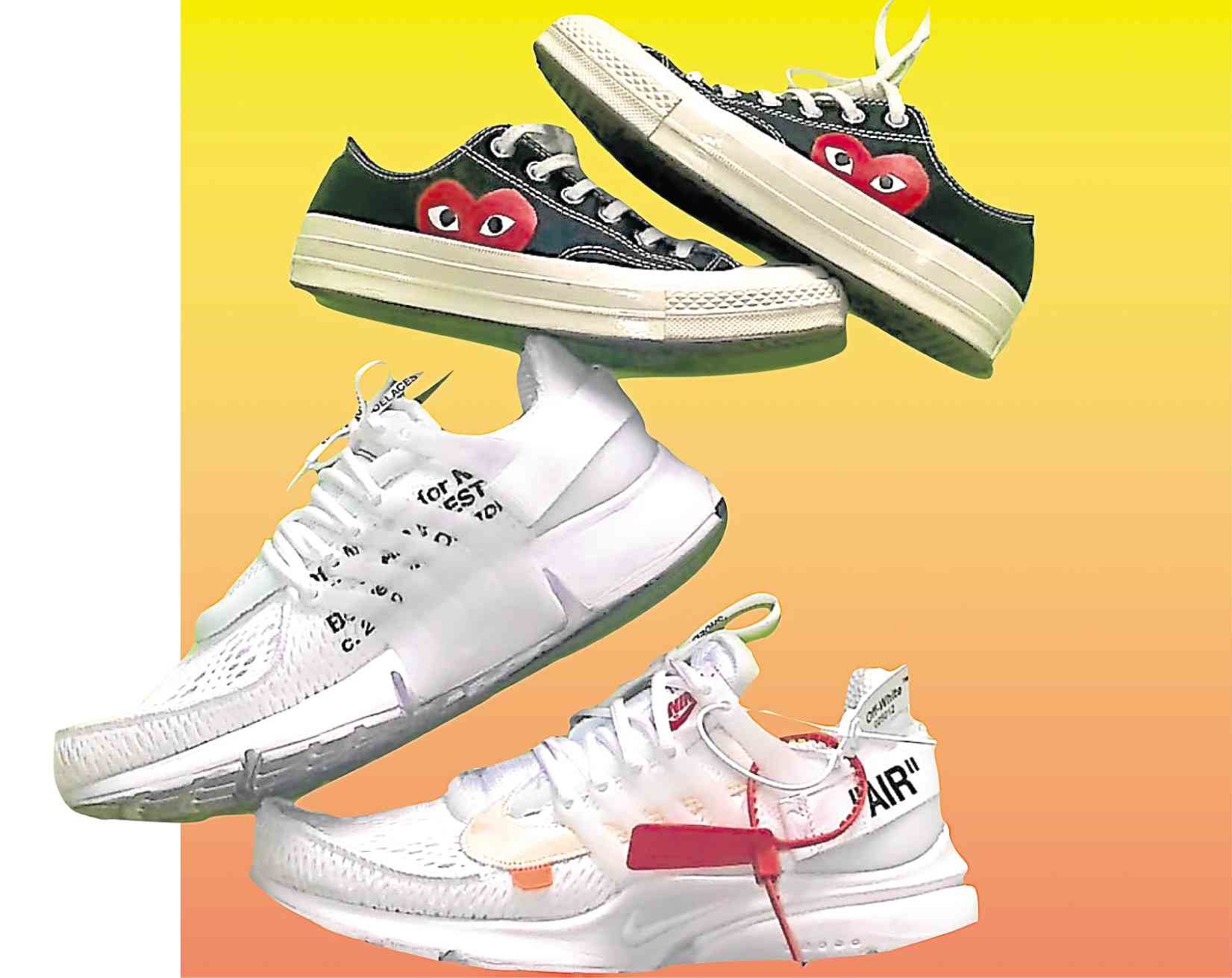
Nike collaborates with Virgil Abloh’s Off-white brand to produce the much-coveted Nike X Off-white. CDG first collaborated with Converse in September 2009.
More often than not, the term “brand” is used incorrectly. Indeed, it is wrong to believe that just because a product or service has a name, it is already a brand.
A product or a service can only be referred to as a brand if it passes a specific research test by a third party. That test determines the level of awareness among potential buyers or subscribers or the top of mind score from a range of 0 to 100 percent.
The higher the top of mind score, the stronger the product’s performance is in the market.
If the product has a dominant top of mind score, that product or service is likely a brand and may even be a market leader or challenger in the category.
Top of mind
That is because a strong top of mind means that a specific brand is the first to be recalled when a specific category is mentioned.
For example, when one thinks of affordable global fast fashion, the following brands may be recalled—H&M, Zara, Uniqlo, Topshop, Forever 21.
Most products or services with average sales performance but thought by owners to be a brand have the following probable research test results i.e., a negligible score of 0 to 3 percent of top of mind, less than 20 percent of unaided awareness and a total awareness score below 30 percent.
Product perception
A product or a service becomes a brand depending on how it is perceived by consumers.
The key is to build strong and relevant positive associations consistently and sustainably from one generation to the next.
Take Nike, an athletic sports brand founded by Phil Knight and Bill Bowerman in 1964.
Despite being a 55-year old brand, its share price has risen from $8.75 in 2005 to $72.63 in 2018.
Along with the Nike brand name are strong positive equity associations attributed to formidable endorsers like Tiger Woods for golf, Michael Jordan and Lebron James for basketball, and Roger Federer and Maria Sharapova for tennis.
Over time, Nike has extended its equity to other youthful and new generation sports along with younger millennial and Gen Z endorsers like Odell Beckham Jr. for football, Paul Rodriguez Jr. and Lacey Baker for skateboard and Chinese League of Legends e-sports gamer Jian Uzi Zihao, Nike’s first e-sports endorser.
Nike’s winning selling line, “Just do it” has expanded from serious sports to include fitness and health and wellness, thus connecting the brand to anyone who has the body and the will to “just do it.”
The line resonates extremely well with the youngest generations who have an expanded view of sports, athletics, health and well-being in general.
Collaboration
For example, young millennials and Gen Zs with generous parents and relatives will do anything to grab a pair of pricey Nike X Off-white shoes that combine the sporty appeal of Nike and the fashion and creative genius of Virgil Abloh.
Nike X collaborates with other edgy fashion labels that appeal to and strengthen its hold on the younger generations that are into health and fitness.
Nike X Supreme, Nike X Undercover, Nike X Louis Vuitton, Nike X Commes des Garcon and Nike X Clot are some of the products of these collaborations.
Nike wouldn’t be successful with all these collaborations nor will the brand gain a foothold among the younger generations without a strong legacy.
And that would not have been possible without Nike’s deliberate moves to build positive associations through branding efforts over the past 55 years.
If Knight and Bowerman hadn’t started branding in the 1970s, there wouldn’t be a global Nike brand today.
Commes des Garcon and Converse, two iconic brands that are popular and considered must-haves among Gen Zs and millennials, are 50 and 111 years old, respectively.
Commes de Garcon and Converse’s first collaboration happened in September 2009 and both are reaping the benefits.
Astute businessmen, while risk takers, take calculated steps.
Wise businessmen start with modest budgets but eventually take the big leap into major branding exercises.
This is because visionary leaders do not rely only on the present generation of customers but believe that a brand can far outlive the present time with the right resources and brand story. —CONTRIBUTED

